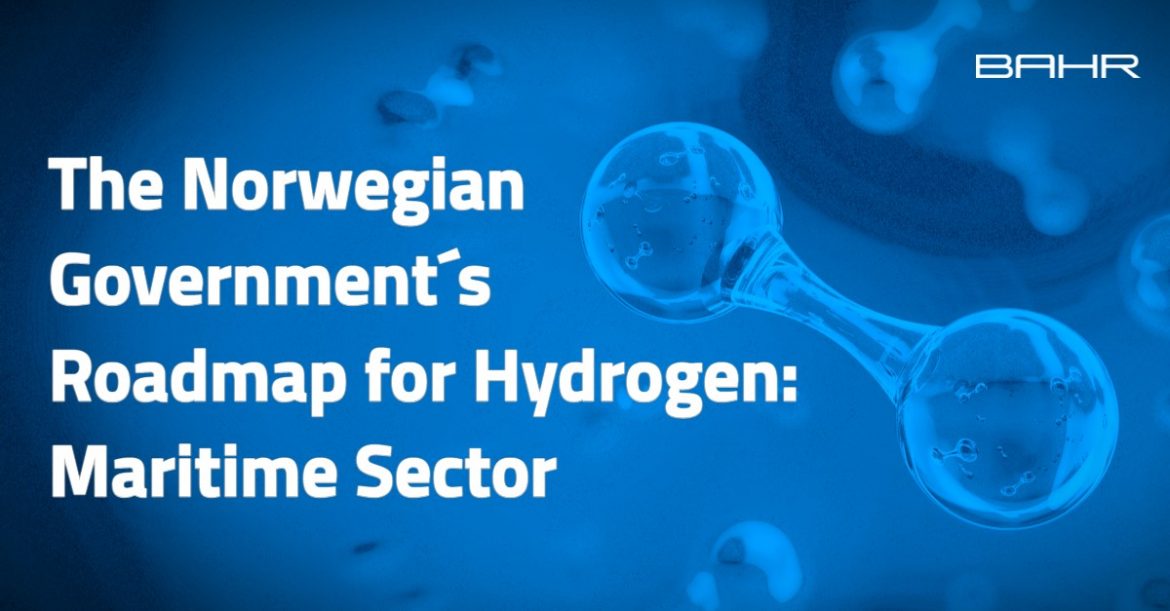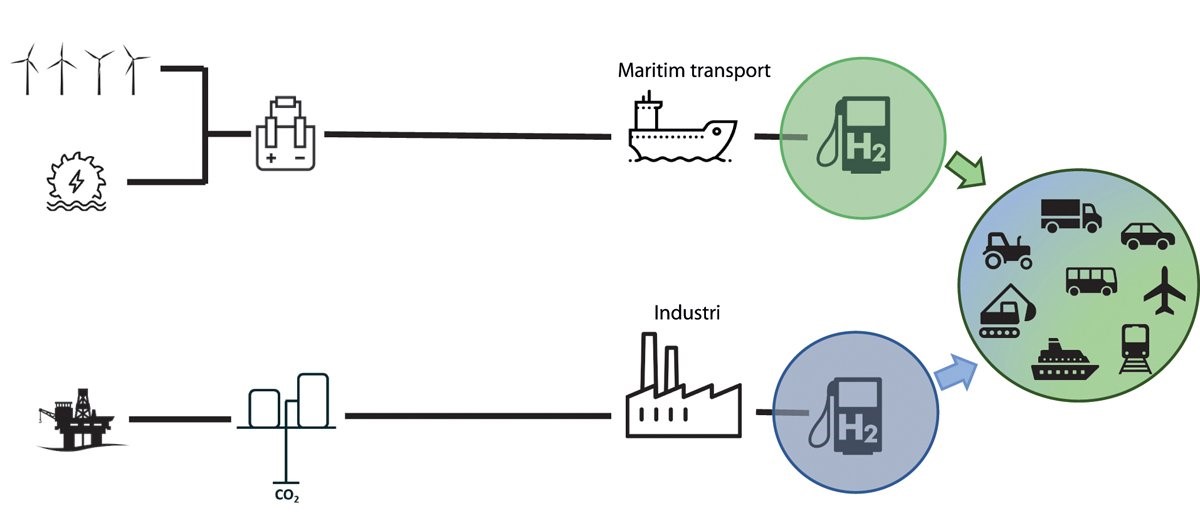Shipping | The Norwegian Government’s Roadmap for Hydrogen: Maritime Sector

The Norwegian Government’s policy plan for Norwegian industry and energy
The aim of the “Energy to work” report is to set a course for how Norway will reach its climate target and the policies to achieve value creation and new job opportunities, for the industry in general and the energy sector in particular. The report is one of the most important policy documents in the last decades for the energy sector, with implications well beyond the energy sector as such.
The report builds on the Government’s climate action plan for 2021-2030 (Meld. St. 13 (2020-2021)] and illustrates how renewable energy and the transmission network lay the foundation for electrification and phasing out of fossil energy. The Government’s overall goal with its energy policy is high value creation through efficient and environmentally friendly management of energy resources.
The report presents the Norwegian Government’s policies for several sectors and is a policy for long-term value creation from Norwegian energy resources based on the following four goals:
- Value creation that provides a basis for work in Norway (the report section 2)
- Electrification shall make Norway greener and better (the report section 3)
- Establishment of new, profitable industries (the report section 4), whereby hydrogen in the maritime sector is specifically addressed (the report section 4.4)
- Development of a forward oriented oil and gas industry within the framework of the climate goals (the report section 5)
Roadmap for Hydrogen
Overall strategy and ambition
The Norwegian Government launched its hydrogen strategy in June 2020. The report “Energy to work” follows up this strategy with a roadmap for hydrogen with a direction and ambition for the development of the production and use of hydrogen in Norway in a five, ten and thirty-year perspective.
The roadmap for hydrogen has the vision that a market will be established in Norway for the production and use of hydrogen in 2050 – and that hydrogen will be used as fuel for vessels both in coastal waters and for long-distance transport. The report sets out certain short and medium term ambitions to reach the 2050 vision.
In the short term, towards 2025, the Government will facilitate the establishment of hydrogen hubs for maritime transport, the establishment of industrial projects with associated production facilities, as well as pilot projects for the development and demonstration of new and more cost-effective hydrogen solutions and -technologies.
In the medium term, towards 2030, the Government has the ambition that hydrogen is established as a realistic alternative in the maritime sector, and that there are prospects for market-based development.
The Roadmap for Hydrogen
The report “Energy to work” details further the roadmap for hydrogen as follows:
The Government will
- Towards 2025 facilitate that – in collaboration with private actors:
a) Five hydrogen hubs for maritime transport will be established, with opportunities for the development of associated land based transport solutions based on hydrogen
b) One to two industrial projects with associated production facilities for hydrogen will be established, with the purpose of demonstrating value chains with global potential
c) Five to ten pilot projects for the development and demonstration of new and more cost-effective hydrogen solutions and -technologies will be established - Strengthen research, development and demonstration of new hydrogen solutions and -technologies with strong business relevance by establishing a separate research center (FME) for hydrogen and ammonia
- Towards 2030 contribute to a development that enables:
a) A network of geographically spread and demand-based hydrogen hubs in line with the access to vessels and vehicles
b) That hydrogen vessels are a competitive and safe alternative for shipping in Norwegian waters and short sea shippingc) Realization of full-scale hydrogen projects in industry with significant potential to spread to Europe and the rest of the world
d) That the use of hydrogen is a competitive alternative to fossil energy
e) That Norwegian hydrogen activities are linked to the development of a market for hydrogen in Europe in the form of exports of goods and services - Carry out an assessment of new instruments such as “Contracts for difference” aimed at realization of large industrial projects such as large-scale production and use of hydrogen
As part of the roadmap for hydrogen, the Government discuss also instruments and supportive policies to realize the goals in the roadmap, including green public procurement, such as within the ferry sector, as well as other incentives and instruments.
The figure below, from the report, shows a simplified hub approach for green and blue hydrogen in the short to medium term (2025 – 2030). A key point in the figure is that the establishment of hubs for the supply of hydrogen for maritime and industrial purposes will contribute also to the supply of hydrogen for other purposes in reasonable proximity to the hub.

Source: “Energy to work”, report, figure 4.22
BAHR’s View
The policy plan “Energy to work” will, no doubt, trigger a broad debate in Norway, and set the scene for a discussion of the long-term framework for Norwegian energy policy in the years to come and how to meet Norway’s climate targets.
It is not anticipated that the plan will be discussed in Parliament before the summer, and hence the discussion will most likely come after the Parliamentary elections in September.
It is positive that the Norwegian Government sets a clear direction and ambition for the development of the production and use of hydrogen in Norway. We expect the ambition to establish hydrogen hubs for maritime transport, industrial projects with associated production facilities and pilot projects for hydrogen solutions and -technologies, to be important for the maritime sector and its adoption to the climate targets.
In addition to the Government’s roadmap for hydrogen – there are other important policies in the report relevant for the maritime industry – including with respect to offshore wind as well as the oil and gas industry. The Government’s targets and the policies in these areas will have an important impact on the maritime sector oriented towards offshore wind, oil and gas.
The report “Energy to Work” is available here, the guidelines for Offshore Wind are available here and the public consultation of the guidelines can be accessed here.
Do not hesitate to contact any of BAHR’s shipping team members for further information.
